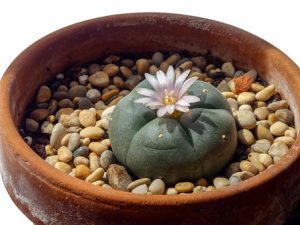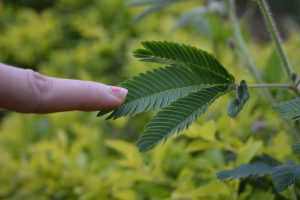Plant Consciousness and Their Senses

Mango Wodzak listed the different qualities of plant perception in his second book, “The Eden Fruitarian Guidebook”. I have done my best to summarize his points bellow. I recommend you also read his thorough explanations, straight from his book:
Sight:
Most plants grow above the ground and see light, perhaps better than humans do. We can recognize this ability by noticing how sunflowers turn their “head” towards the sun.
Daniel Chamovitz, dean of the faculty of life sciences at Tel Aviv University shares his views on this in his book “What a Plant Knows”. His research has lead him to believe that plants can perceive both light and color. He believes that plant’s visual spectrum is even wider than humans, and that they can also register both ultraviolet and infrared light.
Sound:
Research shows that plants can hear their environment. Sir Jagadish Chandra Bose experiments showed that plants grew stronger and faster in the presence of soft, gentle music, and slower when subjected to loud noise or chaotic sounds.
Smell:
When some plants are under attack, they release an organic compound into the air. This substance is detected by other plants nearby and used to prepare for an expected attack. This is a clear demonstration of a sense of smell, arguably much more sensitive than our own.
Taste:
Corn, cotton, and tobacco plants, recognize what kind of caterpillar is munching on them, by the taste of the caterpillars spit. Studies indicate some plant roots have molecules on the surface of the cells, which “taste” soil for pockets of nitrate.
Touch and Movement:
Plants can sense and feel external sources that come in contact with them. We can observe this on the Mimosa Pudicus, whose leaves fold together each time they are touched. Other examples include carnivorous plant such as the Venus Fly Trap. Additionally, plants can also recognize and adapt to changes in temperature, weather, and season.
Intuition:
Plants have additional senses to the five known human senses of sight, sound, smell, taste, and touch. Cleve Backster’s research showed that plants may have a form of sixth sense, similar to intuition.
Emotion:
Backster’s studies also suggest plants can have reactions comparable to those of stress and fear. Even though intuition and emotions are not consider senses, it seemed appropriate to add them to this list.
Previous Section:
Next Section:
Acknowledgments
Thank you for reading!
Please donate to help us publish this book.
PayPal: trevesbruno@gmail.com
Venmo: @Bruno-Treves



